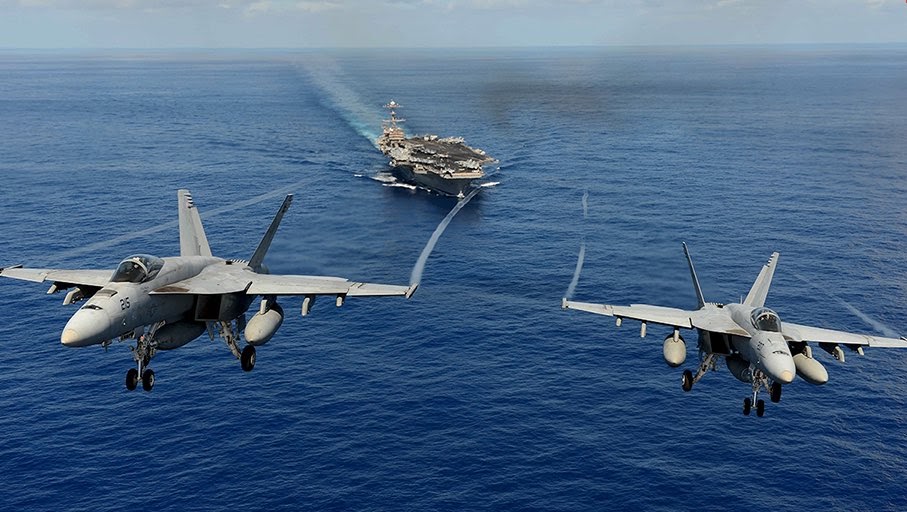
Unlike the two-seater Super Hornet, the two-seater Rafale Marine cannot operate from an aircraft carrier. This could disqualify him from the tender
By Vikas Gupta
Defence News of India, 16 May 22
Indian Navy Ship (INS) Vikrant, the Navy’s first Indigenous Aircraft Carrier (IAC-1), is undergoing lengthy sea trials after which it will enter operational service later this year. With the Navy’s 45 MiG-29K/KUB Russian fighters notorious for their unreliability, the Navy plans to urgently procure 26 Multi-Role Carrier-Based Fighters (MRCBFs) from an international supplier, so the INS Vikrant has other strike options besides the unreliable MiG. -29s.
With INS Vikrant likely to be followed by a second indigenous carrier (IAC-2) named INS Vishal, another 31 MRCBFs will be acquired to operate off her deck, bringing the MRCBF acquisition to 57 fighters.
The Boeing Company (Boeing), the main competitor for supplying the MRCBFs, claims that the F/A-18E/F Super Hornet fighters it offers are significantly more attractive than the on-board variant of the Rafale – the Rafale Marine – whose company French, Dassault Aviation, proposes.
Alain Garcia, business development manager for Boeing Defense in India, says the Super Hornet offers major operational benefits. The Indian Navy’s tender for 26 MRCBFs calls for eight two-seat variants and only 18 single-seat variants. This is not a problem for Boeing, whose F-18s are all designed – the single-seat F/A-18E and the two-seat F/A-18F – to be able to operate as an aircraft carrier deck.
Unlike the two-seater Super Hornet, the two-seater Rafale Marine cannot operate from an aircraft carrier. Many Indian procurement officials say this should disqualify the two-seater Rafale from the MRCBF tender.
“Eight of the 26 Rafale fighters purchased can only operate from land bases. It’s hard to understand why the navy would buy jets that can’t operate from an aircraft carrier,” an Indian procurement official said.
But sources say the Indian Navy has decided that the two-seater Rafale will not be disqualified due to its inability to operate from an aircraft carrier.
Boeing officials say the Super Hornet is designed from the ground up as a carrier-based aircraft with every component designed for that purpose. For example, the folding wings of the Super Hornet save space on the flight deck, the hangars and on the elevator that transports the planes between these two levels. On the other hand, the wings of the Rafale are not foldable. Parts have to be removed – such as the nose cone and wingtips – to move it from deck to deck.
Like the Super Hornet, other aviation platforms and systems that operate from a US carrier are designed from the outset to operate as part of a carrier-based system. For example, the electronic attack variant of the Super Hornet, called the F/A-18G Growler, is designed to accompany Super Hornets on strike missions, jamming enemy radars and electronic defenses.
US Navy carrier groups also have an airborne early warning capability in their air wings, for which each carrier carries three to four E-2D Hawkeye aircraft. The Indian Navy is considering having this capability.
The onboard Super Hornets are also highly compatible with equipment the Indian Navy is already using. They are connected via standard NATO Link-16 data, voice and video links with MH-60 Romeo anti-submarine helicopters, P-8I Poseidon long-range seaplanes and other warships. of the carrier group.
If the Indian Navy acquires Super Hornets, interoperability would be further improved between US Navy platforms.
New acquisition process
The method chosen to select the MRCBF is different from the standard Indian Ministry of Defense procurement process and will reduce the time required to evaluate, select and contract the aircraft.
The process began with the Navy issuing a Request for Information (RFI), to which Boeing and Dassault responded. Then, the two aircraft – the Super Hornet and the Rafale Marine – performed an operational demonstration at the Navy’s shore-based test facility (SBTF) in Goa to demonstrate their aircraft’s compatibility with ski jumping and d other carrier systems.
Now, the two companies will submit a final price and availability (P&A) letter and Indian officials will make a decision based on that. Indian Navy pilots will not fly the aircraft. Instead, the Indian Ministry of Defense will evaluate the operational demonstration and prepare a technical evaluation report based on it.
Boeing complains that the RFI is based on the lowest common denominator, in which the cheapest plane is chosen rather than the best performing. With only two competitors in the fray, the Indian Navy wants to keep them both in consideration to avoid single-source competition. This allows the Navy to write and adjust requirements to keep both competitors.






